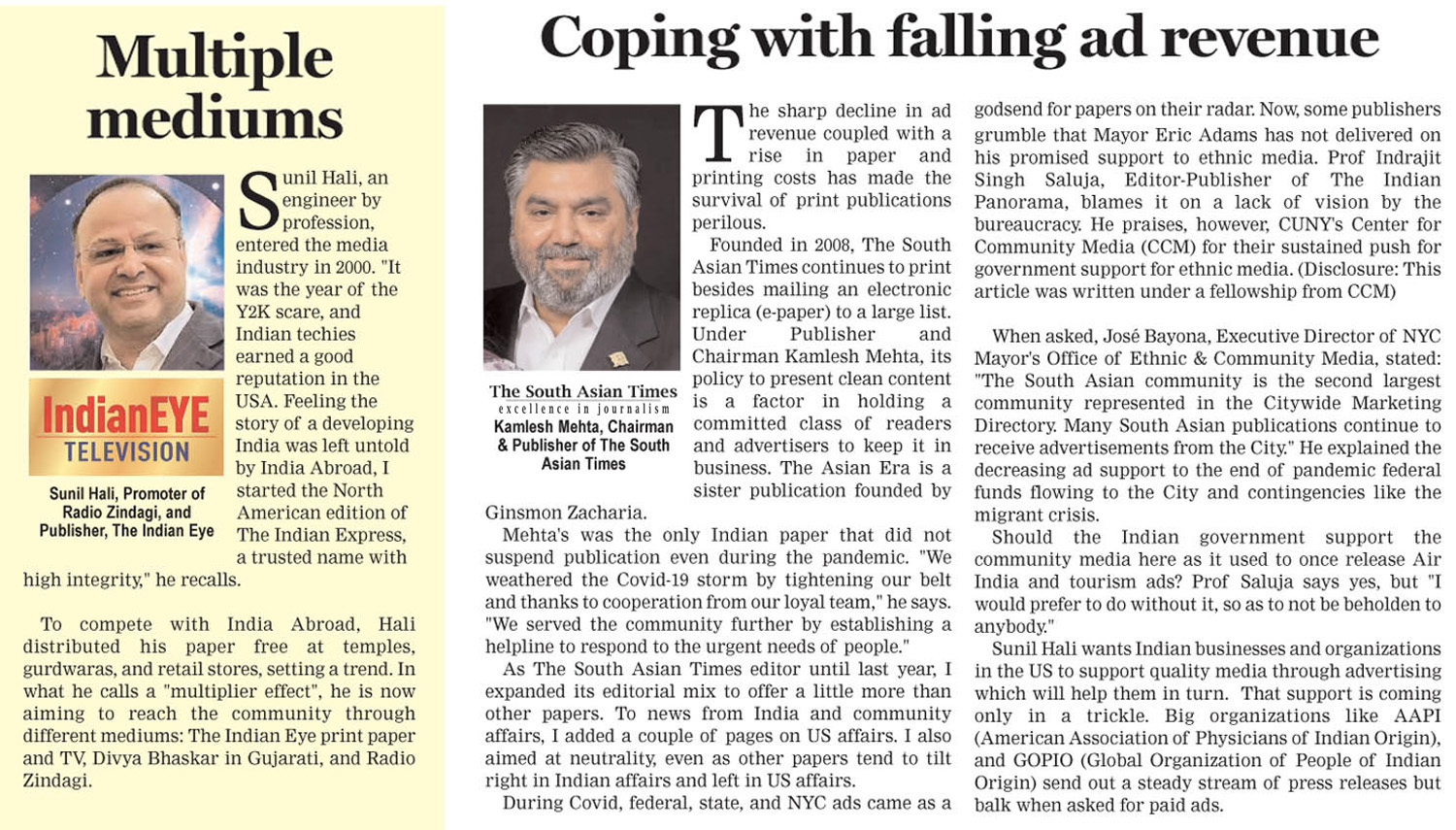Publishers and editors reveal how they have been coping and the business strategies they have adopted.


Founder, ALotusInTheMud.com
Founding Editor, The South Asian Times
In 2020, India Abroad, known as the gold standard in ethnic newspapers in America, closed operations after 50 years in circulation. In 2022 New India Abroad was started by a different team.
That tells you the story of Indian media in America. Down and up. Resilience and renewal. Learning and adapting.
The downturn for all journalism – not just Indian ethnic media – has been caused by the ever-growing digital revolution. The 2008 economic meltdown was bad for the media too. Covid years were worse. Now, social media is the new villain in the journalism story. Many storied newspapers in the US have closed or curtailed operations.
Indian ethnic media has been more vulnerable because of a lack of promoters with deep pockets for sustaining operations and a dearth of committed journalists doing quality work to keep readers engaged. Surprisingly, the big media houses from India have not ventured here.
The need for quality journalism to serve the Indian community is greater than ever. For one, the community is growing – their numbers increased from about 3 million in 2010 to more than 4.5 million as per the 2020 census. Indian Americans make headlines as achievers in the US media and are referred to as a model minority.
But being new immigrants, the community cannot let its guard down. Knowledge is power. It is the job of community media to bring to the notice of their readers issues that need collective action. And, becoming their voice, take their issues to officials and lawmakers concerned. For example, they need to keep hammering the US Congress to resolve the monstrous green card backlog for Indians.
A new, combustible case is Washington state passing a law (now under consideration in California) banning discrimination based on caste, a practice allegedly extended here from India. Some Hindu groups condemned the move as anti-Indian. The community papers should be explaining the implications of the bill and build a consensus – for or against.
Surely, all regions of the US with large Indian populations have community newspapers. But most of them have mainly ended up as aggregators compiling news and features available freely. In contrast, New York-based India Abroad once spawned editions in other diaspora countries and a news agency.
India Abroad, under publisher Gopal Raju, even made press freedom history. They published a story linking megastar Amitabh Bachchan’s brother, Ajitabh Bachchan, to kickbacks in a defense deal. Ajitabh sued in London and won 40,000-pound damages in 1990. Raju fought the enforcement at home. US legacy media including The New York Times filed briefs in Raju’s support. Raju won.
Unfortunately, declining ad revenue while honor-bound to keep printing copies to serve its 20,000+ paid subscribers made the paper a hot potato eventually.
One contemporary of India Abroad was India West, a paper with big circulation on the West Coast. Its aging owners, Bina and Ramesh Murarka, shut it down when Covid struck.
Today, a new opportunity has arisen for the Indian media. With the greater visibility of South Asians in many spheres of American life, it is time to tell their story to the mainstream. But to achieve that you need some gumption and broader vision. Indian Americans are well-educated and high earners. Rightly leveraged, this market can support a vibrant media.
So, what is blocking that from happening, and what is the way forward? Publishers and editors responded to reveal how they have been coping and the business strategies they have adopted.
Business models in the mix







Be the first to comment